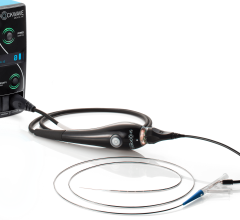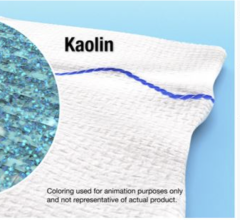
The use of invasive, pressure wire-based fractional flow reserve (FFR) in the cath lab is now considered the gold standard for assessing the hemodynamic significance of coronary lesions to determine if they should be revascularized or treated medically. Despite being a part of the guidelines and clinician evidence clearly showing the benefit to using FFR, it is still not used in many patients.This is partly due to increased procedure costs from the wires, added procedural time and the use of adenosine as a stressor agent, which can be uncomfortable for patients. In addition to the established FFR technologies, three new options are emerging that may simplify FFR use, eliminate adenosine and change how patients are assessed both invasively and noninvasively.
FFR offers quantifiable ratio measurement of the blood flow pressures before and after a lesion to determine physiological significance. In patients with multiple coronary lesions, FFR can be used to pinpoint which lesion is the main contributor to ischemia and may help reduce the number of stents implanted, leaving less severe lesions alone. The reduction of stents based on FFR measurements reduces the patient’s chances of developing stent-related complications, such as stent thrombosis or in-stent restenosis.
The Validation of iFR
Philips/Volcano developed instantaneous wave-free ratio (iFR) as an alternative to FFR. It eliminates the use of adenosine, cutting additional steps and cost for the procedure. The technology was validated as being noninferior to FFR in two 2017 American College of Cardiology (ACC) late-breaking clinical trials, DEFINE-FLAIR and Instantaneous Wave-Free Ratio versus Fractional Flow Reserve Guided Intervention (IFR-SWEDEHEART).[1,2] Combined, these trials involved more than 4,500 patients. The studies showed iFR had comparable outcomes to FFR, but with better ease of use and eliminating patient chest pain and shortness of breath brought on by adenosine.
At ACC 2018, economic data from DEFINE FLAIR Trial was presented that demonstrated the use of iFR-guided therapy reduces costs and improves patient comfort compared to FFR-guided strategy.[3] The study found that an iFR offered a one-year average cost savings of $896 per patient while delivering consistent patient outcomes with FFR. Previous data from DEFINE FLAIR released in 2017 found that iFR-guided treatments reduced procedure time by 10 percent versus FFR-guided treatments, while reducing patient discomfort by 90 percent.
“The findings from DEFINE FLAIR continue to demonstrate the benefits of iFR, showing that an iFR-guided treatment offers proven outcomes, reduced costs and procedure time, and enhanced patient comfort compared to FFR,” said Manesh Patel, M.D., FACC, FSCAI, chief of the Division of Cardiology and co-director of the Duke Heart Center at Duke University School of Medicine. “iFR is not only a faster diagnostic solution, but it also offers the advantage of significantly reduced patient discomfort. By implementing an iFR program at a hospital, this solution can deliver the clinical outcome benefits of physiology-driven PCI, while reducing annual healthcare costs
significantly across the organization.”
Watch a VIDEO interview with Patel at ACC.18.
The Society of Cardiac Angiography and Interventions (SCAI) released a focused update expert consensus statement in July 2018 for the use of invasive coronary physiological assessments. It recommends either fractional flow reserve (FFR) and instantaneous wave-free ratio (iFR) technologies can be used to assess the hemodynamic significance of coronary lesions to determine if a stent is needed. The statement said physiologically guided percutaneous coronary intervention (PCI) results in better clinical outcomes and saves resources compared to angiographic image guidance alone.[4]
Access the expert consensus statement article.
Both iFR and FFR are deemed “definitely beneficial” for assessing the functional significance of intermediate coronary stenoses when noninvasive stress imaging is not available or does not provide a definitive answer. SCAI sees probable benefits when FFR or iFR are used to reclassify the number of vessels that are diseased in patients with multivessel disease.
Watch the VIDEO: iFR Equal to FFR Outcomes in Coronary Lesion Evaluation or read the article on the DEFINE-FLAIR and SWEDEHEART studies.
The European Society of Cardiology incorporated iFR into its 2018 updated revascularization guidelines in late August 2018.
FFR-CT Offer Noninvasive Assessments
FFR-computed tomography (FFR-CT) has FDA clearance for imaging-only assessments or the coronary arteries, creating a computational-fluid dynamics algorithm derived FFR 3-D model for the entire coronary tree. The CT scan allows very good anatomical detail of the parties and plaque and the addition of FFR-CT allows for functional assessment as well. The technology may allow CT in the emergency department to be the gate-keeper to the cath lab and may greatly reduce or eliminate the need for diagnostic catheterizations in the future. Multiple trials comparing FFR-CT to invasive FFR in the same patients show an 80 percent correlation.
The lack of reimbursement has hindered the expansed use of this technology, but over the past year, numerous large insurance companies and Medicare announced they will now offer reimbursements for FFR-CT.
Angiography-based FFR Imaging
Another new technology that has generated a lot of interest over the past year is angiography image-derived FFR. Similar to FFR-CT, FFR-angio uses an invasive cine run while the patient is on the table in the cath lab to create an FFR reading without the need for pressure wires and pull backs. Medis, CathWorks and Pie Medical Imaging have each developed a version of this technology. GE Healthcare is partnering to expand the availability of Medis’ FFR-angio Quantitative Flow Ratio (QFR) software. Philips has partnered with HeartFlow, provider of the only FDA-cleared FFR-CT software, to develop FFR-angio software.
Pie Medical Imaging has received U.S. Food and Drug Administration (FDA) 510(k) clearance for its CAAS vFFR (Cardiovascular Angiographic Analysis Systems for vessel Fractional Flow Reserve) software. It can calculate the pressure drop and vFFR value in the coronary artery non-invasively, without the need for a pressure wire or hyperemic agent. The FAST Study data, presented at EuroPCR 2018, showed vFFR as calculated using the software has a high linear correlation to invasively measured FFR.
Watch the VIDEO: Angiography Image-based FFR May Eliminate Need for Pressure Wires, a discussion with William Fearon, M.D., director of interventional cardiology, Stanford University Medical Center, about the FAST-FFR Trial he is heading using CathWorks FFR_angio technology.
New FFR Clinical Data
There were a few new late-breaking trials presented over the past year at key cardiology conferences on FFR impact on patient care.
A late-breaking trial presented at the 2018 EuroPCR conference in May was the first placebo-controlled trial that looked at how FFR and iFR predicts the efficacy of percutaneous coronary intervention (PCI) found angioplasty improved ischemia. The invasive physiology data from 196 patients from the Objective Randomized Blinded Investigation with optimal medical Therapy of Angioplasty in stable angina (ORBITA) Trial.
“In particular, from this study, we’ve seen that the degree of ischemia on iFR and FFR entirely predicts the degree of improvement in ischemia that’s seen on dobutamine stress echo," said Rasha Al-Lamee, interventional cardiology consultant at Imperial College London and principal investigator for ORBITA. "What this means for physicians is that we will be able to use the iFR and FFR data before an intervention to predict exactly how much improvement in ischemia we can expect for our patients following successful stenting. This is the first placebo-controlled evidence we have had of this kind.”
FFR and iFR were used as predictors of placebo-controlled efficacy of PCI in stable coronary artery disease. Patients enrolled had stable angina and single vessel coronary artery disease. At pre-randomization the majority had Canadian Cardiovascular Society class II or III symptoms (150/196, 76.5%). Mean FFR and iFR were 0.69±0.16 and 0.76±0.22, respectively. 97% of patients had one or more positive noninvasive or invasive tests for ischemia.
FFR and iFR was performed solely for this research question, and so the interventionalist in the catheterization laboratory was blinded to the results. Assessment of response variables, treadmill exercise time, stress echo score, symptom frequency, and angina severity were performed at pre-randomization and blinded follow-up. Effects were calculated by analysis of covariance. The ability of FFR and iFR to predict placebo-controlled changes in response variables was tested using regression modeling.
The placebo-controlled effect of PCI was more clearly seen by stress echo score and freedom from angina than change in treadmill exercise time. The estimated effect of PCI on between-arm pre-randomization-adjusted total exercise time was 20.7s (95% CI: -4.0 to 45.5; p=0.100) with no dependence on FFR (p-interaction=0.318) and iFR (p-interaction=0.523). PCI improved stress echo score more than placebo (1.07 segment units, 95% CI: 0.70 to 1.44, p<0.00001). The placebo-controlled effect of PCI on stress echo score increased progressively with decreasing FFR (pinteraction<0.00001) and decreasing iFR (pinteraction<0.00001). PCI resulted in more patient-reported freedom from angina than placebo (49.5% versus 31.5%; OR 2.47, 95% CI: 1.30 to 4.72; p=0.006) but neither FFR (pinteraction=0.693) nor iFR (pinteraction=0.761) modified this effect.
"This is the first placebo-controlled trial looking at how invasive physiology predicts the efficacy of PCI," Said Al-Lamee. "In this publication and in the primary publication in The Lancet we saw that angioplasty improved ischemia as assessed by dobutamine stress echo. However, in this analysis we were also able to assess an additional secondary endpoint of freedom from angina. What is most interesting is that we found that angioplasty increased the number of patients who were free of angina by 20 absolute percentage points. For physicians, this means that one in five patients that we treat with angioplasty vs. placebo will be more likely to be free from angina. For our patients, this is one of the most important things we can tell them, that they are more likely to become symptom free.”
He said the next step for ORBITA is to look at the degree to which stress echo itself predicts the placebo-controlled impact of PCI. “In order to build on some of the questions answered in ORBITA as well as being able to apply ORBITA to a wider patient base, we are also preparing for ORBITA 2 which will be a larger trial, with wider inclusion criteria for patients with stable angina,” Al-Lamee concluded.
Another EuroPCR 2018 presentation addressed the ongoing controversy exists regarding the role of PCI for stable coronary lesions to improve hard outcomes. Three randomized controlled trials have compared fractional flow reserve (FFR)-guided PCI using modern drug-eluting stents versus medical therapy for stable lesions: FAME 2, DANAMI-3-PRIMULTI, and COMPARE-ACUTE. A new pooled analysis of these trials showed FFR does reduce cardiac deaths and heart attacks.
Each study demonstrated a clinical benefit in favor of FFR-guided PCI, including urgent revascularization in the primary endpoint. However, each trial by itself was not powered for the endpoint of cardiac death or myocardial infarction. For this reason, a pooled, patient-level analysis including 2,400 patients was performed to address adequately whether FFR-guided modern PCI reduces cardiac death or myocardial infarction versus medical therapy.
This is the first pooled analysis on a patient level which includes all existing trials comparing FFR-guided PCI with contemporary stents versus medical therapy. In addition, this analysis extended follow-up for both the FAME 2 and DANAMI-3-PRIMULTI trials.
“Our results show for the first time that modern PCI, when guided by FFR, reduces so-called 'hard endpoints' – the composite outcome of cardiac death or myocardial infarction – when compared to an initial strategy using medical therapy," explained Frederik M. Zimmermann, M.D., Department of Cardiology, Catharina Hospital Eindhoven, The Netherlands. "Importantly, we found a relative risk reduction of approximately 30 percent when using FFR-guided treatment, which corresponded to an estimated absolute risk reduction of about 4.5 percent at five years. Our analyses also favored FFR-guided PCI when examining the composite of all-cause death or myocardial infarction. Differences between groups were driven by a reduction in myocardial infarction. No differences were observed for deaths from cardiac causes or deaths from any cause."
FFR Systems Comparison Chart
This article served as an introduction for comparison charts on both FFR systems and FFR pressure wires. Access to the charts requires a login, but it is free to create and only takes a minute.
References:


 May 01, 2025
May 01, 2025 








